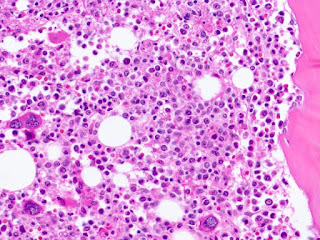New research on remyelination could lead to a novel approach to developing treatments for multiple sclerosis. The findings suggest new targets for therapeutic intervention and how the disease environment in MS may prevent effective myelin repair and regeneration.
The findings by a University at Buffalo team reveal that activation of a specific transcription factor induces in adult stem cells a phenomenon called pathological quiescence, a situation in which the adult stem cells are rendered incapable of responding to injury by producing myelin-forming oligodendrocytes. The failure to remyelinate is the key feature of MS.
The study defines the role of the previously undescribed transcription factor known as PRRX1 in human oligodendrocyte progenitor cells, the cells that generate myelin-forming oligodendrocytes. The research demonstrated that PRRX1 expression results in the cell cycle arrest and quiescence of oligodendrocyte progenitors, which disabled the production of myelin.
In an animal model of leukodystrophy, the group of genetic disorders in which myelin fails to form or is destroyed in children, the researchers said that pathological quiescence induced by PRRX1 prevented cell colonization of white matter and effective myelin regeneration by transplanted human oligodendrocyte progenitors. They also found that blocking expression of this transcription factor prevented the negative effects of proinflammatory cytokines, such as interferon-γ, which regulates its expression.
Current MS research focuses largely on drugs that induce the differentiation of human oligodendrocyte progenitors. In contrast, the new research presents a novel concept for the development of new drugs based on blocking the pathological quiescence of progenitors.
Results of animal model studies sometimes do not translate to humans and may be years away from being a marketable treatment. However, the researchers said that finding that pathological quiescence is key to the inability to repair and regenerate myelin in MS provides a novel direction for the team’s research.
The findings were published in Cell Reports.
Article source: MSF
Photo- MS Views and News
::::::::::::::::::::::::::::::::::::::::::::::::::::::::::::::::::::::::::::::::::::::::::::::::::::::::::::::::::::::::::::::::::::::::::::::::::::::::::::::::::
Stay informed with MS news and information - Sign-up here
For MS patients, caregivers or clinicians, Care to chat about MS? Join Our online COMMUNITY CHAT




